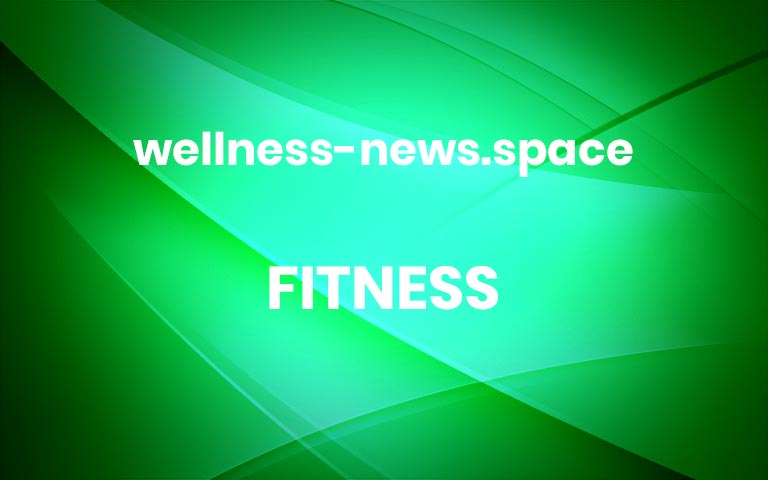The runners among you know all too well the aches, pains and muscle tension that occur during or after running. These are typically felt in the back, knees, legs, ankles and hips. They not only affect those new to running, but also those who run on a regular basis. The good news is that yoga poses can help you get rid of the pain, prevent injuries and even improve your breathing during your running sessions.
Good to know:
Regular yoga has a positive impact on your flexibility, bone density, blood circulation and breathing and even helps you gain muscle. It is also perfect for relaxing and warming up before a workout and promotes post-run recovery!
Below you can find the Top 8 Yoga Poses for Runners, which can help you improve both your running training as well as your post-run recovery. Whenever possible, make sure to breathe deeply from your abdomen when doing the poses and direct your breathing to the targeted body part to intensify the stretch.
Yoga for Runners: 8 Great yoga poses
1. Downward-Facing Dog (Adho Mukha Svanasana)
Ask anyone, yogi or not, to name a yoga pose and most likely they will mention Downward-Facing Dog. Why? Because it’s an excellent pose to check-in with your body. Within this pose you open up and stretch your arms, back and legs. You can get a general feeling for the areas which are tighter than others while in Downward-Facing Dog while experiencing sensations in the areas you should focus more on. This pose allows you to open up your calves and hamstrings and stretch your feet and achilles tendon while pushing your heel towards the ground, thus making it the perfect yoga pose for runners. In addition to being extremely regenerative, this pose improves circulation throughout the body as the head is below the heart.
How it’s done:In this pose, it is important to avoid over-stretching your legs. Keep your back straight and make sure you lift your sit bones high. You can leave your knees slightly bent if you like. If you want to stretch your calf and hamstring muscles, bend one knee and then the other. Your arms should always remain straight with your biceps facing up.
2. Triangle Pose (Trikonasana)
Triangle will stretch the hips, groins, hamstrings, the muscles surrounding the knee, calves, ankle joints, shoulders, chest, and spine. It also strengthens the abdominal muscles, obliques, back, legs, knees, and ankles. This pose includes a light spine strengthening twist. This pose is great for runners because it helps to open the groins and hamstrings and improves balance by strengthening and stretching the ankles.
How it’s done:Stand with your legs straight and your feet a bit wider than hip-width apart (but not too wide). Raise your arms so they are parallel to the floor at shoulder height. Stretch your body to one side as if someone were pulling on your hand. Your back should remain as straight as possible, and your hips should face forward. Reach your arm down as far as you can while making sure that your weight is distributed evenly through both legs (your back foot should not come off the floor) and bend down to the floor with your back straight. The goal is for your hand to touch the floor, but you can also place it on your shin. Make sure to stack your shoulders on top of each other (as if you were leaning on a wall behind you) and look up at the ceiling.
3. Standing Forward Fold (Uttanasana)
This pose is a great opener for the calves, hips and hamstrings and helps to strengthen the quadriceps and knees. It’s important for everyone to have loose and flexible hamstrings. Tight hamstrings are likely the culprit of back pain and tension which can then transfer to problems with the knees and hips.
How it’s done:Stand with your feet hip-width apart and bend forward over your knees. Put your weight on your legs so you can hang naturally. Keeping your knees slightly bent will help to really relax your upper body.
4. Tree (Vrksasana)
If you want to do this pose you need to think strong and balanced. This pose is great for strengthening the calves, ankles, thighs, and the spine, while simultaneously stretching the shoulders, groin, chest, and inner thighs, and opening the hips. Another benefit of the tree pose is that it can also reduce flat feet and relieve sciatic pain.
How it’s done:Stand upright and keep your back straight and your legs active. Bring one foot up the inside of the other leg and place it there above the knee (not on the knee). The knee of the bent leg should point to the side, thus stretching your lumbar muscles. Reach both arms up above your head. Tip: Focus on a point in front of you to help keep your balance!
5. Reclining Pigeon (Sucirandhrasana)
Reclining pigeon is a gentler modification of pigeon pose, and perfect for tight hips. This pose is also excellent for stretching the connective tissue that runs along your outer thigh from your hip to your shin, the so-called IT band. This yoga pose is also known for being preventative for knee problems because a tight IT Band could eventually lead to issues with the knee. If you want to you can do this pose at the end of any run.
How it’s done:Lie on your back with your knees bent and cross one foot over the other knee, keeping your foot flexed to protect your knee. Now reach your hands behind the hamstring of the leg on the floor and hug it toward your chest. Make sure to keep your shoulders and neck relaxed.
6. Cobbler or Butterfly (Baddha Konasana)
Being a great stretch and yoga pose for runners, the cobbler’s pose opens the inner thighs, knees and groin, and even boosts mobility in the hips while releasing tension and strengthening the muscles of your back.
How it’s done:Sit with your spine straight. Bend your knees out to the side and bring the soles of your feet together. Your back should remain as straight as possible.
7. Child’s pose (Balasana)
This pose is meant to be a comforting, gentle stretch and resting pose. With the child’s pose you stretch your hips, knees, thighs, low back, and ankles. It also releases back and neck strain and helps blood flow to the brain and spine. For athletes, and especially for runners, the child’s pose aids in keeping the ankles flexible and supple, while stretching the tops of the shins and the feet, which may help in avoiding shin splints. If you already have had the chance to take a yoga class, your instructor most likely reminded you to come to this pose at any time throughout the practice if you need a break.
How it’s done:Kneel on the floor with your knees hip-width apart and your big toes touching behind you. Bend over and lay your torso down between your thighs. Sit back on your heels and rest your forehead on the mat. To increase the back stretch, you can actively stretch your arms forward and push your tailbone back. If you want to give your shoulders a rest, place your arms at the side of your body.
8. Low Lunge (Anjaneyasana)
Well-known as an excellent hip opener, the low lunge stretches the groin and thighs. Many runners suffer from tight hips, which can lead to under active gluteal muscles, resulting in potential knee and/or low back problems. For this pose you need to focus. It can be performed with the front toe up against a wall in order to promote balance and stabilization. It’s also okay to use the wall to walk your hands up until you feel stable enough to extend them above your head.
How it’s done:From a standing position, take one step forward while keeping the second leg in place. Bend the knee of the front leg at a 90-degree angle. Lower your back leg to the floor or hold it straight. Make sure to keep your back straight, your tailbone tucked under and your hips facing forward. Reach your arms straight above your head. If you have problems keeping your balance, try focusing on a point in front of you and breathe calmly.
Bottom line
Yoga for runners has many benefits. The main thing is to perform the yoga poses properly, focus on your breathing and listen to your body. As part of your warm-up and cool-down routine, these poses can get you ready to run and promote post-run recovery and muscle growth. Are you looking for the best type of yoga for beginners? Give hatha yoga a try. In this type of yoga, the yoga poses are performed slowly, and the focus is on creating a balance between breathing and movement – perfect for getting started with yoga!
*** More



